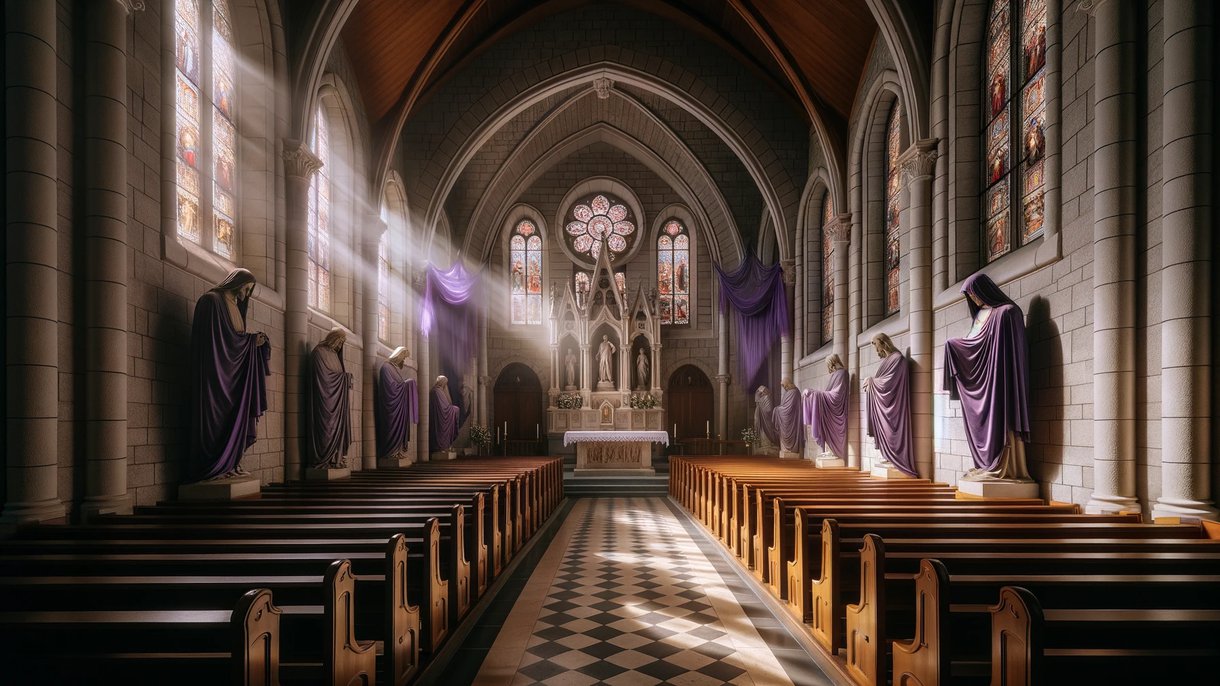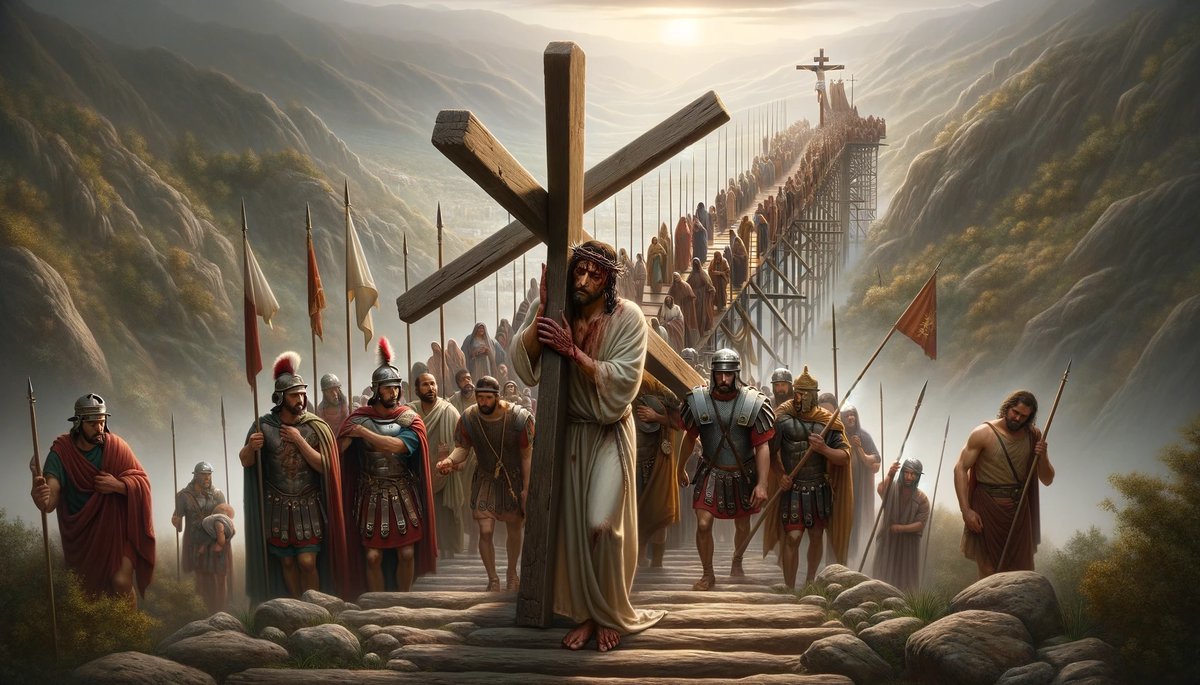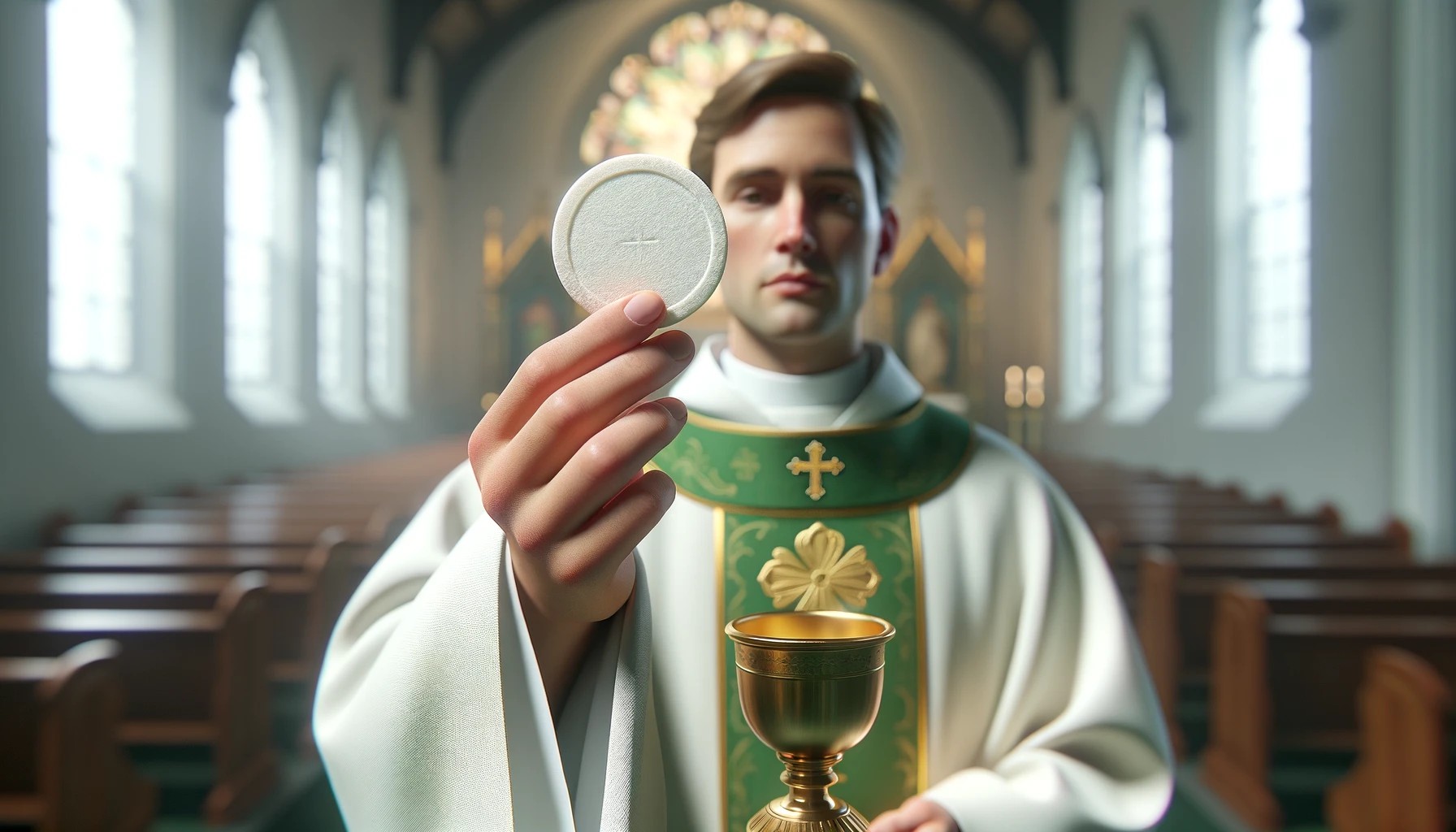Home>Special Themes>When Does The Catholic Church Cover Statues During Lent


Special Themes
When Does The Catholic Church Cover Statues During Lent
Published: February 28, 2024
Jason DeRose, Managing Editor at Christian.net, uses his expertise in religion and journalism to deepen understanding of faith's societal impacts. His editorial leadership, coupled with a strong academic background, enriches the platform’s diverse content, earning him recognition in both journalism and religious circles.
Learn about the Catholic Church's practice of covering statues during Lent and the significance of this special tradition. Explore the reasons behind this custom and its importance in the Lenten season.
(Many of the links in this article redirect to a specific reviewed product. Your purchase of these products through affiliate links helps to generate commission for Christian.net, at no extra cost. Learn more)
Table of Contents
Reasons for Covering Statues During Lent
-
Focusing on Spiritual Reflection: One of the primary reasons for covering statues during Lent is to encourage Catholics to focus on spiritual reflection. By removing visual distractions, such as statues and other decorations, the faithful are prompted to turn their attention inward and contemplate the significance of the Lenten season.
-
Emphasizing the Journey of Sacrifice: Lent is a period of sacrifice and penance in the Catholic faith. The act of covering statues serves as a visual reminder of the solemnity of this season, prompting believers to embrace the spirit of sacrifice and self-denial as they prepare for the celebration of Easter.
-
Creating a Sense of Anticipation: The practice of covering statues during Lent also serves to create a sense of anticipation for the joyous celebration of Easter. By temporarily concealing the statues, the Church underscores the idea of waiting and preparing for the resurrection of Jesus Christ, reinforcing the significance of this pivotal event in the Christian calendar.
-
Encouraging a Return to the Basics of Faith: Removing statues during Lent encourages Catholics to refocus on the fundamental aspects of their faith. This intentional stripping away of visual elements prompts believers to revisit the core teachings of the Church and deepen their understanding of the spiritual principles that underpin their religious beliefs.
-
Promoting Humility and Detachment: Covering statues during Lent is also symbolic of humility and detachment. By temporarily veiling these representations, Catholics are reminded of the transient nature of material possessions and the importance of cultivating a humble and detached approach to life, in line with the teachings of Jesus Christ.
In summary, the practice of covering statues during Lent serves as a powerful visual and spiritual reminder of the core principles of the Catholic faith, prompting believers to engage in introspection, sacrifice, and anticipation as they journey through this sacred season.
Read more: When Does Lent Start For The Catholics
Historical Background of Covering Statues During Lent
The tradition of covering statues during Lent has its roots in the early centuries of Christianity. In the early Church, Lent was a time of intense preparation for catechumens, individuals who were undergoing instruction in the faith in preparation for baptism. The practice of covering statues and religious images during this period was linked to the catechumens' journey towards initiation into the Church. By veiling the statues, the Church emphasized the solemnity and sacredness of the Lenten season, creating an atmosphere of introspection and spiritual preparation for both the catechumens and the entire Christian community.
Additionally, the historical significance of covering statues during Lent can be traced to the practices of the early desert fathers and mothers, who sought solitude and rigorous spiritual discipline in the wilderness. These ascetics viewed the Lenten period as a time for intense prayer, fasting, and self-examination. The act of covering statues and images during this time was a way to minimize external distractions and focus on the inner journey of repentance and spiritual growth.
Furthermore, the tradition of veiling statues during Lent also reflects the historical development of liturgical practices within the Catholic Church. As the Church evolved and formalized its liturgical calendar, the Lenten season became firmly established as a time of penance, fasting, and preparation for the celebration of Easter. The act of covering statues became intertwined with the broader liturgical observances of Lent, symbolizing the Church's collective journey towards the renewal of faith and the commemoration of Christ's passion, death, and resurrection.
In summary, the historical background of covering statues during Lent is deeply intertwined with the early traditions of the Church, the spiritual practices of the desert fathers and mothers, and the evolution of the Church's liturgical calendar. This historical context underscores the profound significance of the practice as a means of fostering spiritual introspection, preparation, and reverence during the Lenten season.
Symbolism of Covering Statues During Lent
-
Focus on Interiority: The act of covering statues during Lent symbolizes a shift from external displays of faith to internal contemplation. By obscuring the visual representations of saints and religious figures, the Church emphasizes the importance of delving into one's inner spiritual landscape, fostering a deeper connection with God through personal reflection and prayer.
-
Emphasis on Humility and Simplicity: The veiling of statues serves as a powerful symbol of humility and simplicity. It reminds believers of the humble origins of their faith and encourages them to embrace a modest and unadorned approach to spirituality. This practice aligns with the teachings of Jesus, who emphasized the virtues of humility and meekness.
-
Acknowledgment of Christ's Hidden Presence: Covering statues during Lent also acknowledges the hidden presence of Christ in the world. Just as the statues are temporarily concealed from view, the faithful are reminded of the unseen yet ever-present nature of Christ's love and grace, inviting them to seek a deeper awareness of His abiding presence in their lives.
-
Preparation for the Resurrection: The act of veiling statues creates a sense of anticipation and preparation for the joyous celebration of Easter. By temporarily obscuring the statues, the Church underscores the idea of waiting and preparing for the resurrection of Jesus Christ, reinforcing the significance of this pivotal event in the Christian calendar.
-
Symbol of Mourning and Repentance: The covering of statues during Lent also serves as a symbol of mourning and repentance. It signifies a period of solemn reflection on the suffering and sacrifice of Christ, prompting believers to confront their own shortcomings and seek reconciliation with God through acts of penance and contrition.
In essence, the symbolism of covering statues during Lent encompasses a profound spiritual journey, encompassing introspection, humility, anticipation, repentance, and a deepening awareness of the hidden yet transformative presence of Christ in the lives of believers.
Process of Covering Statues in the Catholic Church
The process of covering statues in the Catholic Church during Lent is a deliberate and solemn ritual that reflects the reverence and significance of the Lenten season. The practice typically begins on Ash Wednesday, which marks the commencement of Lent, and continues until the Easter Vigil. The following steps outline the process of covering statues in the Catholic Church:
-
Selection of Appropriate Coverings: Prior to the commencement of Lent, the Church authorities select appropriate coverings, such as purple or violet cloths, to veil the statues. These coverings are chosen for their symbolic significance, as purple is traditionally associated with penitence, preparation, and anticipation in the liturgical calendar.
-
Removal of Decorative Elements: Before the statues are covered, any decorative elements or embellishments surrounding the statues may be removed. This serves to create a visually stark and contemplative environment within the church, emphasizing the solemnity of the Lenten season.
-
Veiling of Statues: On Ash Wednesday, the selected coverings are draped over the statues, effectively concealing them from view. The act of veiling the statues is often accompanied by prayers or liturgical readings that underscore the spiritual significance of the Lenten season and the purpose of covering the statues.
-
Placement of the Veiled Statues: Once the statues are covered, they may be positioned in a prominent area of the church, such as the sanctuary or a designated side altar, where they remain veiled throughout the Lenten period. This placement serves as a visual reminder to the faithful of the solemnity and introspective nature of the season.
-
Unveiling at Easter Vigil: The period of covering statues culminates in the Easter Vigil, the most significant liturgical celebration in the Catholic calendar. During this vigil, the coverings are removed from the statues, symbolizing the transition from the penitential season of Lent to the joyous celebration of Christ's resurrection. The unveiling of the statues is often accompanied by prayers, hymns, and readings that herald the triumph of light over darkness and the resurrection of Christ.
The process of covering statues in the Catholic Church during Lent is a deeply symbolic and ritualistic practice that invites believers to engage in a period of spiritual introspection, preparation, and anticipation as they journey towards the celebration of Easter. This ritual underscores the profound spiritual significance of the Lenten season within the Catholic tradition.
Controversies Surrounding the Practice of Covering Statues During Lent
-
Iconoclasm and Misinterpretation: One of the primary controversies surrounding the practice of covering statues during Lent is rooted in the historical debates over iconoclasm. Some critics argue that veiling statues may be misinterpreted as a form of iconoclasm, the deliberate destruction or defacement of religious images. This perspective raises concerns about the potential misinterpretation of the Church's intentions in covering statues, particularly by individuals who may not fully understand the symbolic significance of the practice.
-
Misconceptions about Idolatry: Another source of controversy stems from misconceptions about idolatry. Critics of the practice may express concerns that covering statues during Lent could be misconstrued as an attempt to distance the Church from idolatrous practices. This controversy often arises from a lack of understanding about the nuanced theological and symbolic meanings associated with the veiling of statues, leading to misconceptions about the Church's stance on the veneration of saints and religious imagery.
-
Perception of Disconnection from the Faithful: Some individuals within the Catholic community may view the practice of covering statues as a potential source of disconnection between the faithful and the visual representations of their religious heritage. Critics argue that the temporary removal of statues during Lent could create a sense of spiritual absence or detachment, potentially diminishing the sense of connection and familiarity that believers feel towards the saints and religious figures depicted in the statues.
-
Challenges to Tradition and Liturgical Practices: Controversies surrounding the veiling of statues during Lent also extend to debates about the preservation of tradition and liturgical practices. Critics may question the necessity of this practice in contemporary times, expressing concerns about its relevance and potential impact on the engagement of the faithful. This perspective often reflects broader discussions about the adaptation of traditional rituals within the context of modern worship and religious expression.
-
Interpretation of Symbolism: The interpretation of the symbolism behind covering statues during Lent can also be a source of controversy. Some individuals may question the clarity and effectiveness of communicating the symbolic significance of the practice to the broader Catholic community. This controversy underscores the importance of clear and accessible explanations of the spiritual and theological meanings associated with the veiling of statues, particularly for those who may be unfamiliar with this tradition.
In summary, the controversies surrounding the practice of covering statues during Lent reflect a range of concerns related to historical misinterpretations, misconceptions about idolatry, perceptions of disconnection, challenges to tradition, and the interpretation of symbolism. Addressing these controversies requires thoughtful dialogue, education, and a deeper exploration of the rich theological and historical foundations that underpin this solemn Lenten practice.















